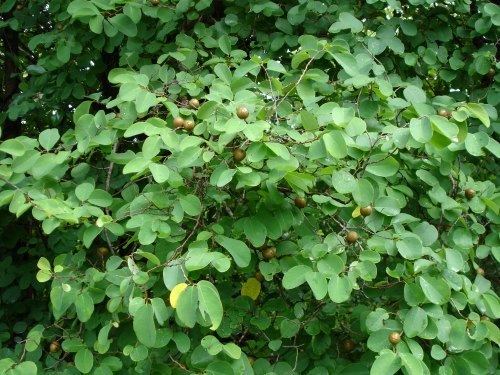Fish toxins or fish stupefying plants have historically been used by many hunter gatherer cultures to stun fish, so they become easy to collect by hand. Some of these toxins paralyse fish, which can then be easily collected. The process of documenting many fish toxins and their use is ongoing, with interest in potential uses from medicine, agriculture, and industry.
Use of the herbal fish poisons has been documented in a number of sources involving catching fish from fresh and sea water.
Tribal people historically used various plants for medicinal and food exploitation purposes. Use of fish poisons is a very old practice in the history of humankind. In 1212 AD, King Frederick II prohibited the use of certain plant piscicides, and by the 15th century, similar laws had been decreed in other European countries, as well. All over the globe, indigenous people use various fish poisons to kill fish, including America and among Tarahumara Indians.
Herbal fish-stupefying agents are proven means of fishing, which do not kill fish like chemical poisons. Many of these plants have been used for a long time by local people, and have been tested and found to have medicinal properties, such as Careya arborea, which is used as analgesic and antidiarrheal. Some of the plants, such as C. collinus, are traditional poisons used in the different part of the country. Bark extracts of Lannea coromandelica caused lysis of cell membranes followed by fragmentation of cellular materials.
In Africa, the closely related families of Caesalpiniaceae, Mimosaceae, and Papilionaceae, and a large number of Euphorbiaceae account for most fish poisons.California buckeye (Aesculus californica) is a widespread tree in the California oak woodlands and chaparral. The large orange-colored fruit is leached in warm water, with the resultant aesculin mixture then applied to pools in slow-moving streams to stun fish.Many of California's Native American tribes traditionally used soaproot, Chlorogalum pomeridianum, which contains saponin, as a fish poison. They would pulverize the roots, mix in water to create a foam, and then add the suds to a stream. This would kill or incapacitate the fish, which could be gathered easily from the surface of the water. The Lassik, Luiseño, Yuki, Yokut, Chilula, Wailaki, Miwok, Kato, Mattole, Nomlaki, and Nishinam tribes used this technique.Olax in the family Olacaceae is a climber with compound, dark-green leaves and white bark. This is the most extensively used fish poison among the Gondi. Typically in summer, the leaves of this plant are dried and powdered. About 1 kg of powder is mixed into water about 5 ft (1.5 m) deep in ponds, usually in the summer. Fish are stunned by the poison and rise to the surface, where they are easily collected by hand. If stunned fish were immediately reintroduced into clean water, they would become active. To get good results from the Olax (or korkat), the temperature should be high.Careya arborea in the family Lecythidaceae is a large deciduous tree with simple large obovate leaves, large fruit and dark gray bark. The root bark is crushed and mixed in water. Upon its admixture, water blackens.Cleistanthus collinus in the family Euphorbiaceae (odcha in Gondi) is a medium-sized tree mainly found around villages. Young tender shoots of this species are used for fish stunning. The shoots are crushed in water on stone, and a paste is mixed into the water. Apart from its use as fish-stupefying agent, the stem of this plant is used for brushing teeth, leaves for storing grains, and wood as fuel.Lannea coromandelica in the family Anacardiaceae is a medium-sized to large deciduous tree with a spreading crown and stout branches. The leaves are compound, the bark is whitish or gray, and it has small, yellowish or purplish flowers. Flowers and fruits appear between February and June. Fruits (red, compressed, reniform, and single-seeded) of this plant are crushed and mixed in water. It is abundant in the Mendha forest.Costus speciosus in the family Costaceae is an erect, succulent herb, up to 2.7 m tall and with a tuberous rootstock, which is crushed and mixed in water for fish stunning. Apart from its use as fish stunning agent in Mendha, tubers of bese mati are consumed after boiling.Madhuca indica in the family Sapotaceae is a large tree, with seeds yielding edible oil. After the removal of the oil from seeds, the remaining cake is used for fish stunning. This cake is locally known as gara-dhep. The cake is boiled in water and mixed into water. A 0.5-kg cake is sufficient for a 100 ft2 pond. It is an effective agent, but fish usually die from its application.Nauclea orientalis is a large tree in the Rubiaceae family. It is commonly known as the Leichhardt tree. The bark is used in creating fish poison.Pterocarpus marsupium in the family Fabaceae is a large tree with simple leaves. Its gray bark is used for fish poisoning, crushed and mixed in water.Verbascum thapsus contains rotenone in its leaves and seeds and has been used for fish poisoning.
